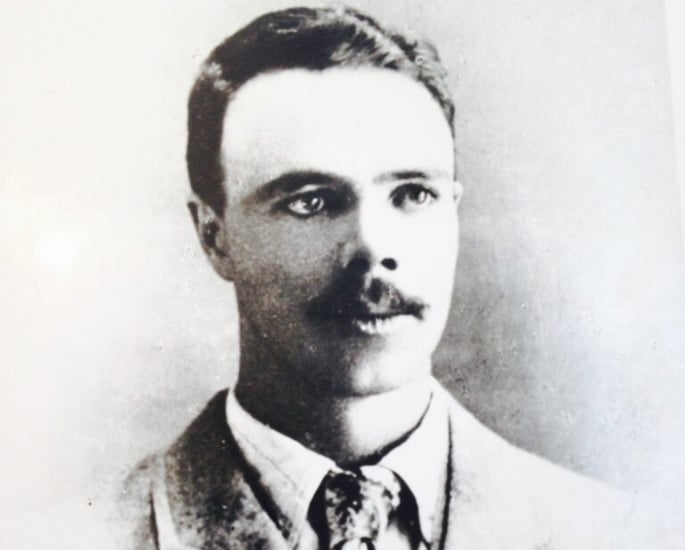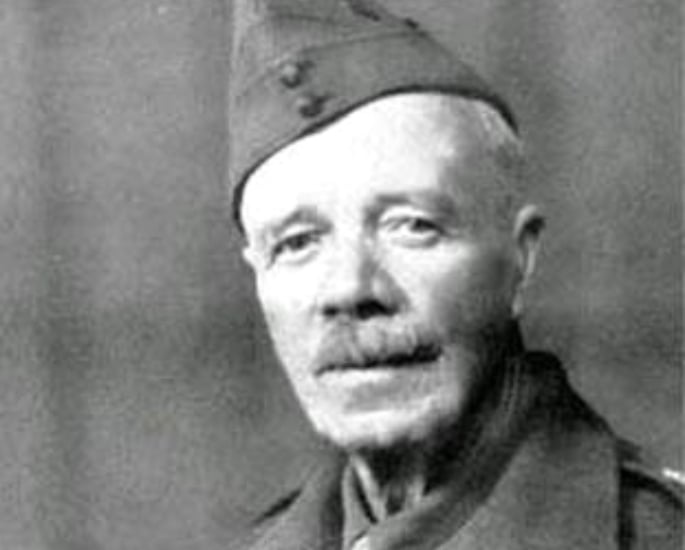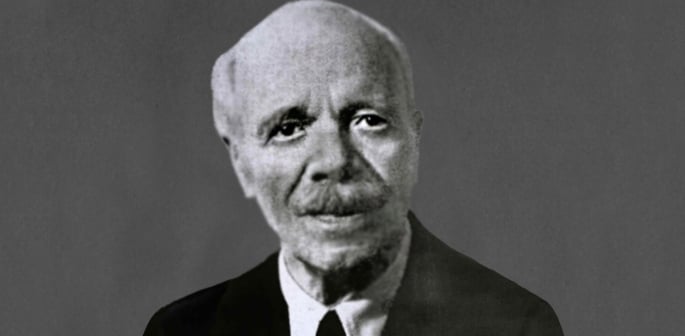Jim Corbett remains a cultural icon.
Regarding legendary cultural figures of India, Jim Corbett stands out as a symbol of bravery and courage.
Corbett gained a reputation for hunting down several wildlife species that posed serious danger to populations.
He did every task calmly, with ethics and morals being his only focus.
After every successful hunt, he was proclaimed a hero.
Corbett is also a renowned author and naturalist. His legacy is unique and deserves as much recognition as a celebrity or a freedom fighter.
DESIblitz presents an original article in which we will learn more about who Jim Corbett was, with a shining lens on his life and origins.
Early Life
 Jim Corbett was born Edward James Corbett on July 25, 1875. His family had emigrated from the British Isles to India in the 19th century.
Jim Corbett was born Edward James Corbett on July 25, 1875. His family had emigrated from the British Isles to India in the 19th century.
His father, Christopher William, was a postmaster of the hill station, Naini Tal. To make ends meet, William invested in property, with his wife becoming Naini Tal’s first estate agent.
William also went on to obtain a plot of land near Kaladhungi, where he built a winter residence.
Corbett’s childhood was privileged, and he learned local Indian languages and Hindu practices from servants.
After his father died in 1881, Corbett’s mother built a house on the opposite side of Naini Tal Lake.
Named Gurney House, this would be Corbett’s home for most of his life.
Corbett’s zeal for hunting and tracking animals formed when he began exploring jungles.
He gained knowledge of wildlife behaviour and became adept at weapons, including shotguns, catapults, and pellet bows.
He trained with his local cadet company at Oak Openings School in Naini Tal.
Corbett impressed dignitaries so much that he was loaned a military Martini-Henry rifle. Using this, he shot his first big cat, which was a leopard.
Financial constraints prohibited Corbett’s initial ambitions of becoming an engineer.
He therefore left home aged 17 and became a fuel inspector in Bihar.
Military Service
 During his job in the fuel industry, Corbett began to appreciate ecology and conservation, which were then unknown areas.
During his job in the fuel industry, Corbett began to appreciate ecology and conservation, which were then unknown areas.
In 1885, Jim Corbett was given a contract to transport goods across the Ganges, situated at Mokameh Ghat.
He was a conscientious worker and cleared backlogs, forming strong friendships with his subordinates.
During his peaceful life at Mokameh Ghat, Corbett made societal contributions, including building a small school and overseeing passenger steamers.
Corbett tried to enlist in the Second Boer War but was rejected. In 1914, he tried to enlist in the First World War but was rejected after being deemed too old.
However, as the First World War continued, the recruitment of Indian soldiers also grew.
In 1917, Corbett was commissioned as a captain, and he recruited 5,000 men in Kumaon.
Corbett and his regiment soon reached Southampton, and he kept the morale of his men high.
By the end of the war in 1918, only one out of the 500 men in his company had died.
Jim Corbett was promoted to Major, and in 1919, he was drafted into the army for the Third Anglo-Afghan War.
Hunting
 Jim Corbett brought his hunting skills to the fore whenever a tiger or leopard became a man-eater in India.
Jim Corbett brought his hunting skills to the fore whenever a tiger or leopard became a man-eater in India.
He provides estimates of the human casualties inflicted by these animals in several of his books.
These books include Man-Eaters of Kumaon and The Man-Eating Leopard of Rudraprayag.
Corbett estimates that the big cats he shot were collectively responsible for over 1,200 human deaths.
Champawat Tiger
The Champawat Tiger was a man-eating tigress who left a deadly trail of terror, killing 436 people.
The conflict between humans and tigers had grown in the 1800s, and the Champawat tiger began her killings in 1907.
Corbett was summoned to kill the tigress, but he agreed on the condition that he would not be paid for shooting the tiger.
The hunter settled in a village named Pali, where villagers were terrified of the tigress. Corbett recognised via the tiger’s tracks that she was an old female.
He soon travelled to the neighbouring village of Champawat. Corbett decided that he needed to shoot the tiger in an open space rather than her natural territory.
Gathering villagers, Corbett told them to make a deafening noise to lure the tigress into the field.
The cacophony finally attracted the tigress and it charged at Corbett. The hunter shot her three times and finally ended her murderous spree.
However, Corbett soon realised that a previous hunter had shattered her jaw, which may have turned her into a violent man-eater.
On Corbett’s behest, the villagers carried her across villages in reverence, and Corbett took her pelt as a trophy, after showing it to a woman who had been rendered mute after the tigress killed her sister.
Other Man-Eaters
While hunting the Champawat tiger, Corbett also heard of the Panar Man-Eater – a leopard who had slain 400 people. He killed it in 1910.
In 1926, Corbett killed another man-eating leopard, known as the Leopard of Rudraprayag.
He also killed several other tigers, including the Thak Man-Eater and the Chowgarh Tigress.
Like the Champawat Tiger, most of these man-eaters had several untreated or festering wounds that may have driven their merciless behaviour.
These wounds were a cry against the indignation of man, who did not have the decency to put the creatures out of their misery.
In Man-Eaters of Kumaon, Corbett explains:
“The wound that has caused a particular tiger to take to man-eating might be the result of a carelessly fired shot and failure to follow up and recover the wounded animal or be the result of the tiger having lost his temper while killing a porcupine.”
Using his first camera in the 1920s, Corbett took intricate pictures of wildlife and established India’s first national park named Hailey National Park.
In the mid-1950s, it was renamed the Jim Corbett National Park in honour of the hunter and is situated in Uttarakhand.
A Cultural Icon Lives On
![]() After the end of the Third Anglo-Afghan War, Corbett did not return to the railways and worked on a Kumaon house agency.
After the end of the Third Anglo-Afghan War, Corbett did not return to the railways and worked on a Kumaon house agency.
He became close friends with Percy Wyndham – the Kumaon District Commissioner. They invested in East African coffee and fought banditry in the jungle.
Corbett also built a house for himself and his sister, Maggie, which was later made into a museum.
Shortly after completing his sixth book, Tree Tops, Jim Corbett died of a heart attack on April 19, 1955, aged 79.
In 1968, the Indochinese tiger was given the name of Corbett’s Tiger in his honour.
Throughout his life, Corbett received several awards and honours, and his life has inspired many media adaptations.
In 1986, the BBC produced a documentary starring Frederick Treves as Corbett. It is titled after his book, Man-Eaters of Kumaon.
Christopher Heyerdahl also starred as Corbett in an IMAX movie titled India: Kingdom of the Tiger (2002).
Jim Corbett remains a cultural icon of India.
His ability to hunt proactively while balancing his respect for wildlife serves as an inspiration for many.
Detailing his vision for India, Corbett once quoted:
“It is these big-hearted sons of the soil, no matter what their cast or creed, who will one day weld the contending factions into a composite whole and make India a great nation.”
When we think of the pioneers of Indian culture, Jim Corbett will always shine in glory.






























































